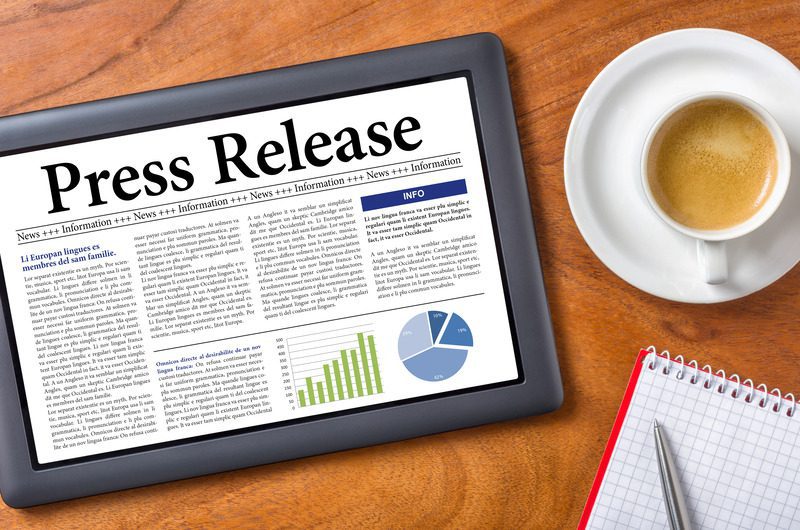
Just about anyone can write a press release. Of all the different types of content that are commonly used for marketing, a press release has a very simple format and tone.
But, how do you write a compelling press release? Accomplishing this is a little less apparent, but it’s still achievable if you keep a few things in mind.
A compelling press release meets all the standards of a conventional press release. This means that it should ideally be between 300 and 500 words in length.
Like all press releases, it should be written in the third-person and read like a news brief or short article. Even though it is a marketing tool, it should not be structured or styled like an advertisement.
24 How To Write A Press Release Articles
Article Published Award Recieved Business Anniversary Case / Survey Study Charitable Contribution Community Outreach Company Reputation Competitor Comparison Discontinued Product / Service Event / Conference Guest Appearance Interesting Product Facts New Capability New Employee New Internship New Product / Service New Partnership New Accreditation Product Origen Story Product Comparison Production Milestone Program Participation Product Upgrade Question & Answer VideoA press release should be used to share details of a noteworthy development or event. The writing should be in a clear, unbiased, and journalistic tone that fosters a positive and trustworthy impression.
It should give the details of the who, what, why, when, and how that are pertinent to the development. This is what a reader is looking for when they click on your press release’s headline to learn more.
To create a compelling press release, consider your reader and what they care about. When you understand what’s important to them, you can speak to them on their terms and give them reasons to care about your piece of news.
Important developments alone aren’t enough to create a compelling press release. It’s up to you to provide the framing and present information in a way that will capture and maintain the full attention of the reader.
Your press release will need to explain why the development matters and how it will affect people, especially those who are your ideal readers.
You don’t need to be a professional writer or experienced journalist to write a compelling press release; you only need to learn some best practices and put in the extra effort to understand and reach your audience.
Why Write A Compelling Press Release?
- Generate excitement for a recent development
- Foster a positive and trustworthy impression
- Encourage readers to learn more about your company

What Should A Compelling Press Release Say?
A compelling press release is going to include the essential details of the newsworthy development, but it’s going to frame these details in a way that tells a story.
This means that the press release will have a strong narrative that tells the reader what happened, but it will also make them want to learn how it happened.
A compelling press release should feel active by explaining any problems that were solved or challenges that were overcome and how. It should also give insight into what motivated the individual, company, or organization to start or take part in this development.
Ultimately, your goal is to give your reader a reason to always want to learn more, from the moment you introduce the topic to a forward-looking conclusion that encourages them to engage, share, and stay informed on future developments.

Creating A Compelling Press Release
When creating a compelling press release, you’ll want to make sure you’ve gotten your facts and sources defined.
If you’re the main source of information, you may find it helpful to outline the details you’ll need to share before you start writing. Creating this reference will make the composition process simpler and faster.
If you’re writing the press release on behalf of an individual or organization, you’ll want to collect and organize the essential information. This may require conducting an interview or having your source answer a questionnaire to provide you with the facts.
These facts will include the name of the people or organization involved, their address, phone number, and website. You’ll also want to gather information on what the development was, where it happened, who was involved and who will be impacted, along with other essential details needed to tell a compelling story.
Tips For Writing A Compelling Press Release
- Create a reference by listing all of the essential details and facts before you start writing
- Collect and include quotes from people who were directly involved in the development
- Hook the reader’s attention at the start by leading with what happened and why it matters

Remember to collect quotes from people who were integral to the development and include their names and titles to properly credit them. You’ll want to include these quotes at points in the press release where they’ll be most impactful.
Once you have the details of who, what, where, when, and why, and a few quotes, you can get to work composing the release.
All press releases will need a compelling headline and summary. Both must be attention-grabbing but straightforward. Effective press release headlines include the most compelling and interesting details but without any boasting or nonessential filler.

While the headline and summary are the first things your reader will see, it can be easier to compose them after you’ve crafted the body of the press release. This will give you a chance to clearly identify the most compelling hook from all of the other supporting details.
When you start writing the body of your press release, your opening should include the most vital and interesting information. Tell your reader what happened and why it’s important before you tell the story of how and when it happened, along with who was involved.
Be sure to let the reader know what spurred the development, whether it was a company setting out to fill a need or an individual who fought hard to reach a goal. Press releases should be journalistic and serious, but you’re still telling a story that involves people making something happen or responding to something, so be sure to focus on the human element.

Just as important as a strong beginning and central narrative is a forward-looking conclusion. You’ll want to give the reader a sense that there is more to come and that they should be on the lookout for future developments.
Lastly, you’ll want to include a brief bio or boilerplate about the individual or organization issuing the press release.








